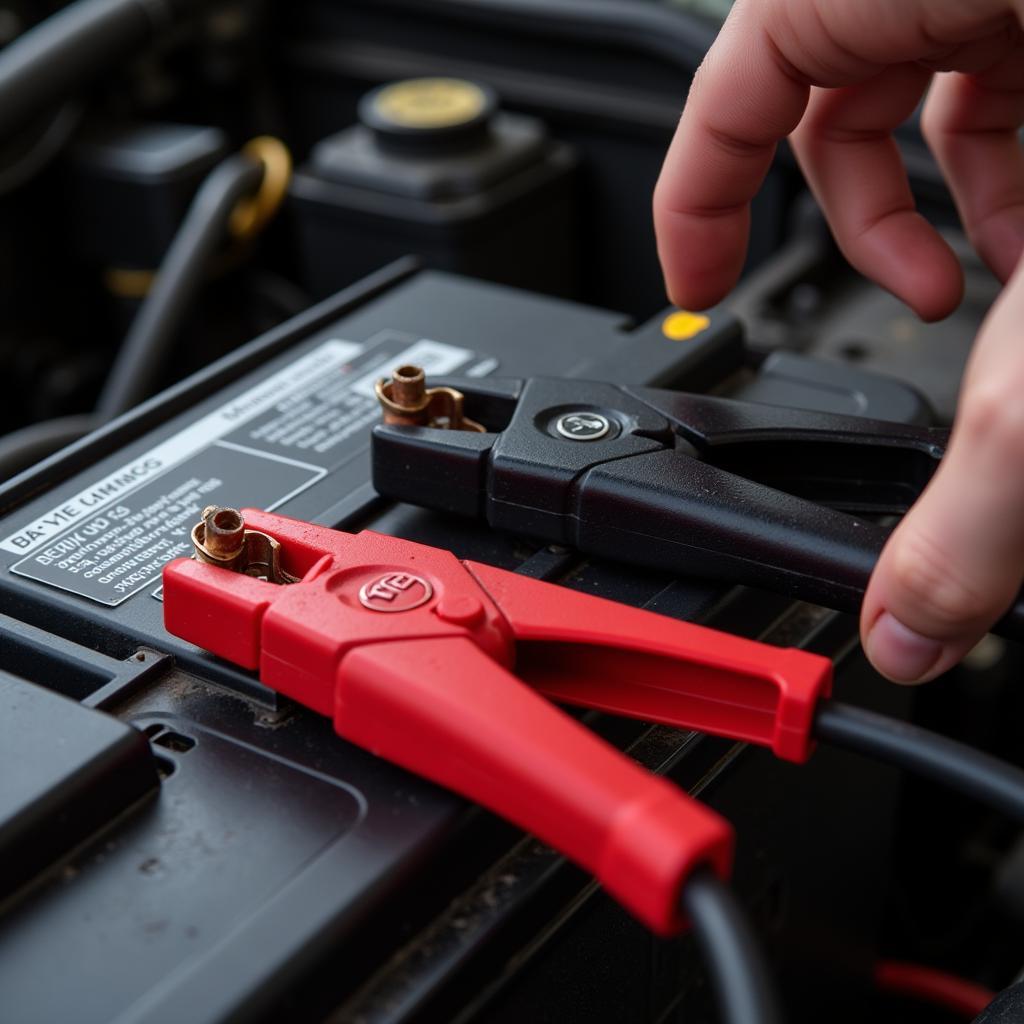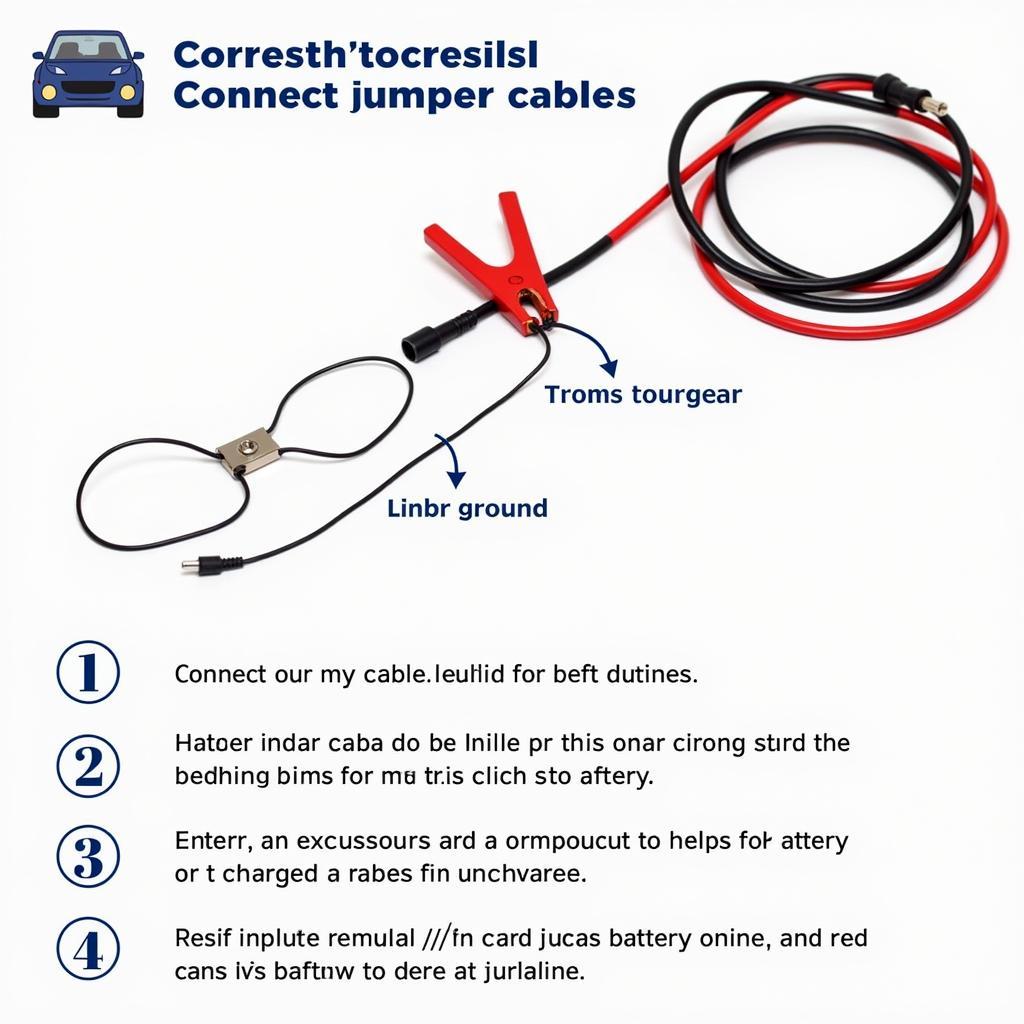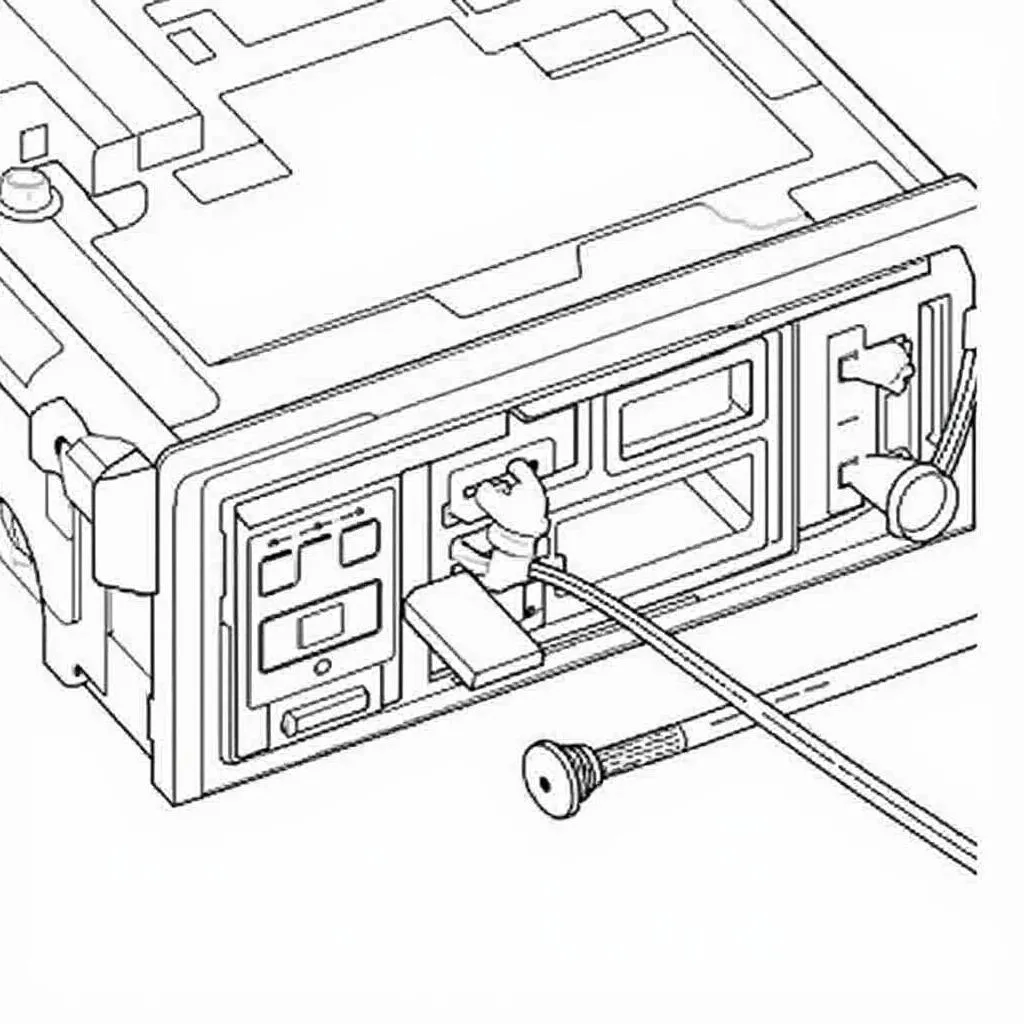A dead car battery is one of the most common reasons why your car won’t start. It can happen to anyone, anywhere, and is often a frustrating experience. This guide will help you understand why your car isn’t starting because of the battery, how to diagnose the problem, and what solutions are available. After reading this, you’ll be equipped to handle this situation like a pro.
 Car Battery Not Starting: Jump Starting a Car with Jumper Cables
Car Battery Not Starting: Jump Starting a Car with Jumper Cables
Why is My Car Not Starting Because of the Battery?
Several factors can lead to a car not starting because of the battery. These range from leaving lights on overnight to extreme temperatures affecting battery performance. A failing alternator can also prevent the battery from recharging properly. Other culprits include parasitic drains, old age, and corroded battery terminals. Understanding these potential causes is the first step in solving the problem. Do you recognize any of these signs of failing battery?
Common Causes of a Dead Car Battery
- Age: Like any other component, car batteries have a limited lifespan. Over time, the battery’s ability to hold a charge diminishes, eventually leading to failure.
- Parasitic Drain: Even when your car is off, certain electrical components can still draw power from the battery. This slow drain, often caused by faulty wiring or a malfunctioning device, can eventually deplete the battery completely.
- Extreme Temperatures: Both extreme heat and cold can negatively impact battery performance. Heat can evaporate the battery fluid, while cold can slow down the chemical reactions needed to produce power.
- Human Error: Leaving the headlights, interior lights, or radio on can drain the battery, especially overnight.
Diagnosing a Dead Car Battery
If you suspect your car isn’t starting because of the battery, there are a few simple tests you can perform. First, check the sign of dead battery. Then, try turning on the headlights. Dim headlights indicate a low battery. Next, listen for a clicking sound when you turn the key. This usually suggests the battery has enough power to engage the starter solenoid but not enough to crank the engine. Finally, if you have a multimeter, you can check the battery voltage. A reading below 12.6 volts typically indicates a problem.
“A quick voltage check with a multimeter can save you a lot of time and frustration,” says automotive expert John Smith, ASE Certified Master Technician. “It’s a simple test that anyone can perform.”
How to Jump Start Your Car
- Safety First: Wear safety glasses and gloves.
- Connect the Cables: Attach the red (positive) cable to the positive terminal of the dead battery, then to the positive terminal of the good battery. Connect the black (negative) cable to the negative terminal of the good battery, then to a metal ground on the car with the dead battery.
- Start the Working Car: Let the working car run for a few minutes to charge the dead battery.
- Start the Dead Car: Attempt to start the car with the dead battery.
- Disconnect the Cables: Remove the cables in the reverse order of connection.
 Jump Starting Car with Dead Battery: Disconnecting Jumper Cables
Jump Starting Car with Dead Battery: Disconnecting Jumper Cables
Preventing Future Battery Problems
Regular battery maintenance can help prevent future starting problems. This includes cleaning the battery terminals, checking the battery’s charge level, and ensuring the alternator is functioning correctly. Also, be mindful of leaving lights or accessories on when the car is off. Finally, replacing your battery every 3-5 years, or as recommended by your vehicle’s manufacturer, can also save you from future headaches. Experiencing car battery dying symptoms? It might be time for a replacement. You can also consider installing a bluetooth for the car radio to minimize the use of power-consuming features.
“Preventive maintenance is key to a healthy battery,” advises Jane Doe, automotive electrical specialist. “Simple steps like cleaning the terminals can significantly extend its life.” If you find yourself with a check engine light after battery died, consult a mechanic.
Conclusion
A car not starting because of the battery is a common issue, but with a little knowledge and preparation, you can handle it effectively. By understanding the causes, learning how to diagnose the problem, and practicing preventive maintenance, you can keep your car running smoothly and avoid the frustration of a dead battery. Remember to carry jumper cables and familiarize yourself with the jump-starting procedure. This will allow you to get back on the road quickly and safely.
FAQ
-
How long does a car battery last? Typically, car batteries last between 3 and 5 years.
-
Can I jump-start my car myself? Yes, with proper precautions and the correct procedure, you can safely jump-start your car.
-
What causes a car battery to drain quickly? Several factors can drain a car battery, including leaving lights on, parasitic drains, faulty alternators, and extreme temperatures.
-
How do I know if my alternator is bad? Symptoms of a bad alternator include dimming headlights, flickering interior lights, and a warning light on the dashboard.
-
How often should I check my car battery? It’s a good idea to check your car battery at least twice a year, especially before the onset of winter and summer.
-
Is it safe to drive with a bad alternator? Driving with a bad alternator is not recommended, as it can eventually lead to a complete battery failure and leave you stranded.
-
Can a dead battery damage the car? While a dead battery itself won’t damage the car, repeatedly jump-starting it or leaving it discharged for extended periods can shorten its lifespan and potentially affect other electrical components.

